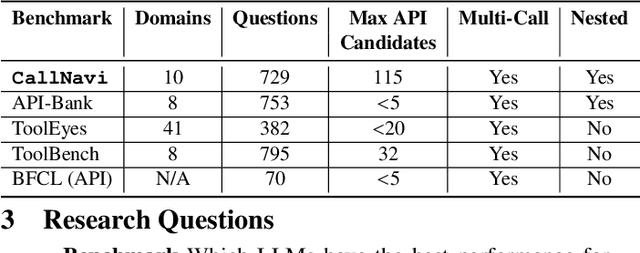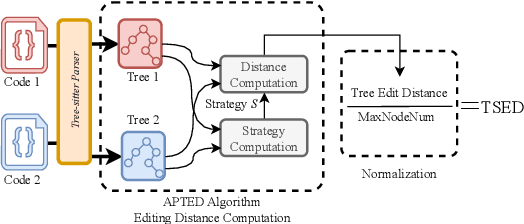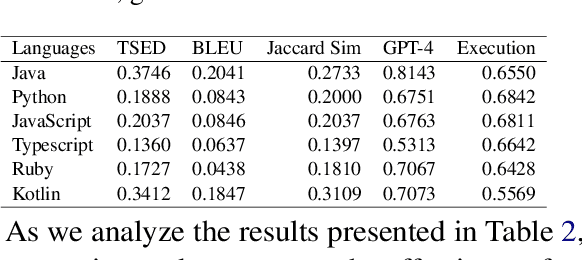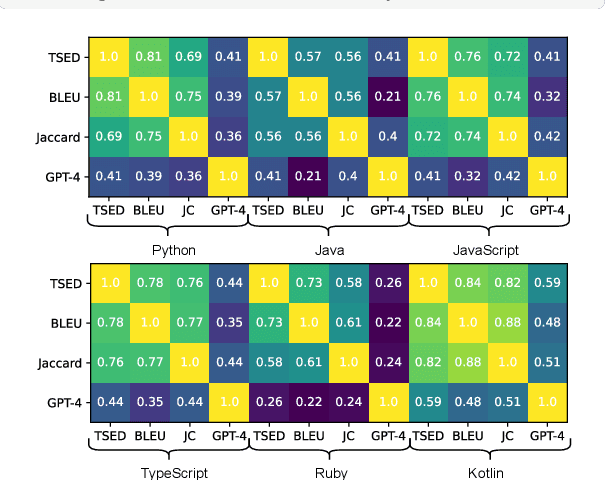Yewei Song
Measuring LLM Code Generation Stability via Structural Entropy
Aug 19, 2025Abstract:Assessing the stability of code generation from large language models (LLMs) is essential for judging their reliability in real-world development. We extend prior "structural-entropy concepts" to the program domain by pairing entropy with abstract syntax tree (AST) analysis. For any fixed prompt, we collect the multiset of depth-bounded subtrees of AST in each generated program and treat their relative frequencies as a probability distribution. We then measure stability in two complementary ways: (i) Jensen-Shannon divergence, a symmetric, bounded indicator of structural overlap, and (ii) a Structural Cross-Entropy ratio that highlights missing high-probability patterns. Both metrics admit structural-only and token-aware variants, enabling separate views on control-flow shape and identifier-level variability. Unlike pass@k, BLEU, or CodeBLEU, our metrics are reference-free, language-agnostic, and execution-independent. We benchmark several leading LLMs on standard code generation tasks, demonstrating that AST-driven structural entropy reveals nuances in model consistency and robustness. The method runs in O(n,d) time with no external tests, providing a lightweight addition to the code-generation evaluation toolkit.
Is LLM the Silver Bullet to Low-Resource Languages Machine Translation?
Mar 31, 2025Abstract:Low-Resource Languages (LRLs) present significant challenges in natural language processing due to their limited linguistic resources and underrepresentation in standard datasets. While recent advancements in Large Language Models (LLMs) and Neural Machine Translation (NMT) have substantially improved translation capabilities for high-resource languages, performance disparities persist for LRLs, particularly impacting privacy-sensitive and resource-constrained scenarios. This paper systematically evaluates the limitations of current LLMs across 200 languages using benchmarks such as FLORES-200. We also explore alternative data sources, including news articles and bilingual dictionaries, and demonstrate how knowledge distillation from large pre-trained models can significantly improve smaller LRL translations. Additionally, we investigate various fine-tuning strategies, revealing that incremental enhancements markedly reduce performance gaps on smaller LLMs.
CallNavi: A Study and Challenge on Function Calling Routing and Invocation in Large Language Models
Jan 09, 2025



Abstract:Interacting with a software system via a chatbot can be challenging, especially when the chatbot needs to generate API calls, in the right order and with the right parameters, to communicate with the system. API calling in chatbot systems poses significant challenges, particularly in complex, multi-step tasks requiring accurate API selection and execution. We contribute to this domain in three ways: first, by introducing a novel dataset designed to assess models on API function selection, parameter generation, and nested API calls; second, by benchmarking state-of-the-art language models across varying levels of complexity to evaluate their performance in API function generation and parameter accuracy; and third, by proposing an enhanced API routing method that combines general-purpose large language models for API selection with fine-tuned models for parameter generation and some prompt engineering approach. These approaches lead to substantial improvements in handling complex API tasks, offering practical advancements for real-world API-driven chatbot systems.
Revisiting Code Similarity Evaluation with Abstract Syntax Tree Edit Distance
Apr 12, 2024



Abstract:This paper revisits recent code similarity evaluation metrics, particularly focusing on the application of Abstract Syntax Tree (AST) editing distance in diverse programming languages. In particular, we explore the usefulness of these metrics and compare them to traditional sequence similarity metrics. Our experiments showcase the effectiveness of AST editing distance in capturing intricate code structures, revealing a high correlation with established metrics. Furthermore, we explore the strengths and weaknesses of AST editing distance and prompt-based GPT similarity scores in comparison to BLEU score, execution match, and Jaccard Similarity. We propose, optimize, and publish an adaptable metric that demonstrates effectiveness across all tested languages, representing an enhanced version of Tree Similarity of Edit Distance (TSED).
Letz Translate: Low-Resource Machine Translation for Luxembourgish
Mar 02, 2023



Abstract:Natural language processing of Low-Resource Languages (LRL) is often challenged by the lack of data. Therefore, achieving accurate machine translation (MT) in a low-resource environment is a real problem that requires practical solutions. Research in multilingual models have shown that some LRLs can be handled with such models. However, their large size and computational needs make their use in constrained environments (e.g., mobile/IoT devices or limited/old servers) impractical. In this paper, we address this problem by leveraging the power of large multilingual MT models using knowledge distillation. Knowledge distillation can transfer knowledge from a large and complex teacher model to a simpler and smaller student model without losing much in performance. We also make use of high-resource languages that are related or share the same linguistic root as the target LRL. For our evaluation, we consider Luxembourgish as the LRL that shares some roots and properties with German. We build multiple resource-efficient models based on German, knowledge distillation from the multilingual No Language Left Behind (NLLB) model, and pseudo-translation. We find that our efficient models are more than 30\% faster and perform only 4\% lower compared to the large state-of-the-art NLLB model.
 Add to Chrome
Add to Chrome Add to Firefox
Add to Firefox Add to Edge
Add to Edge